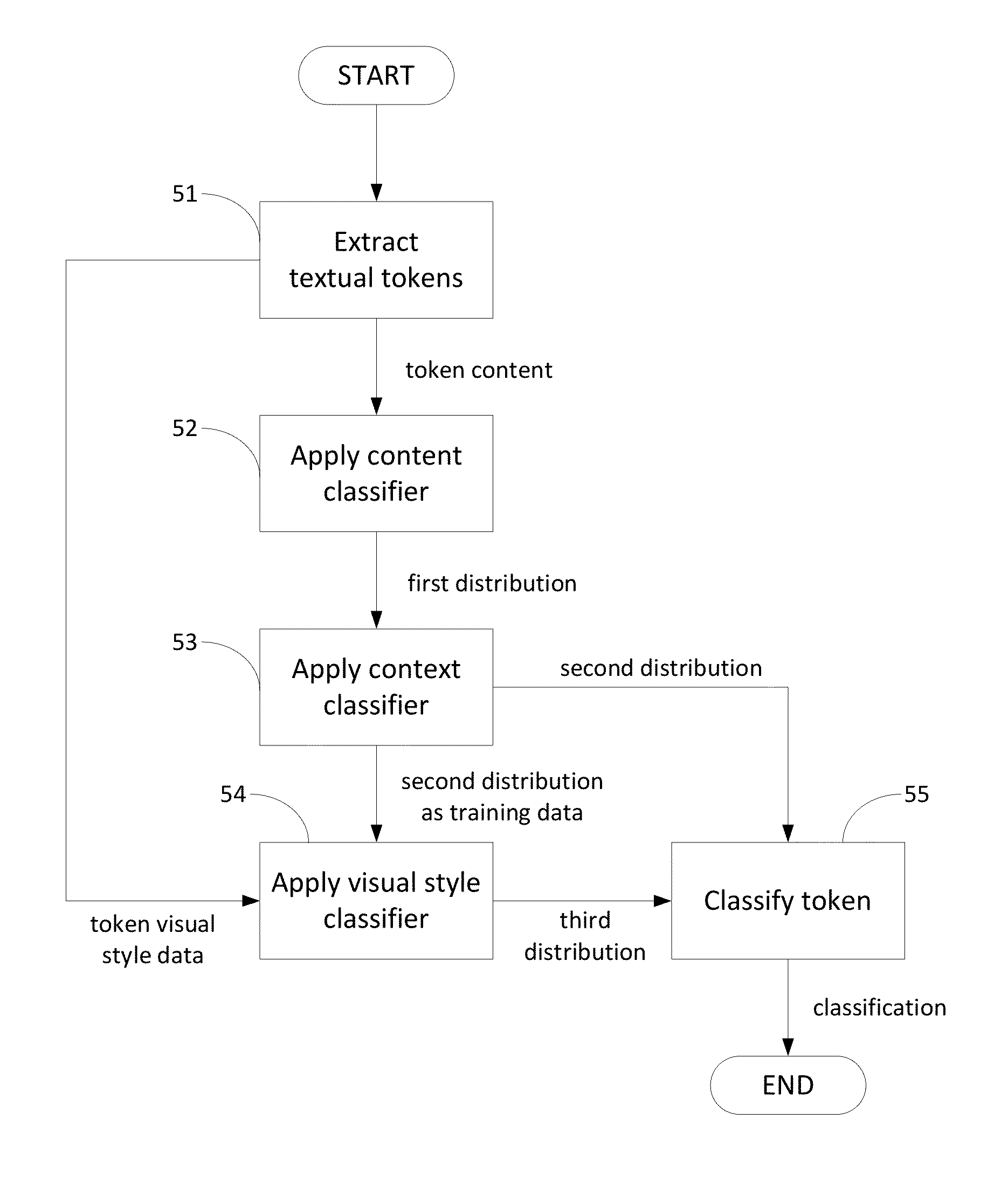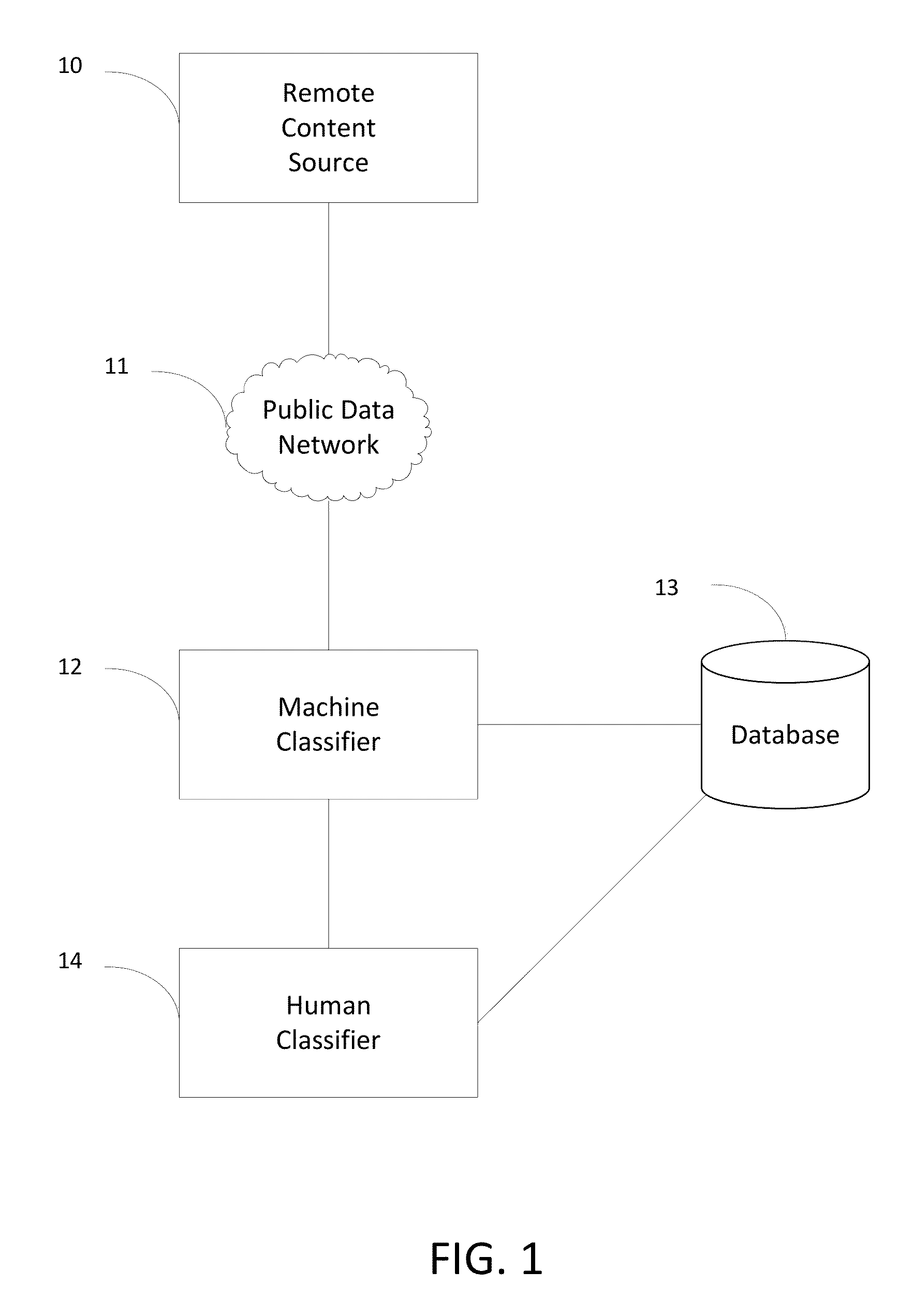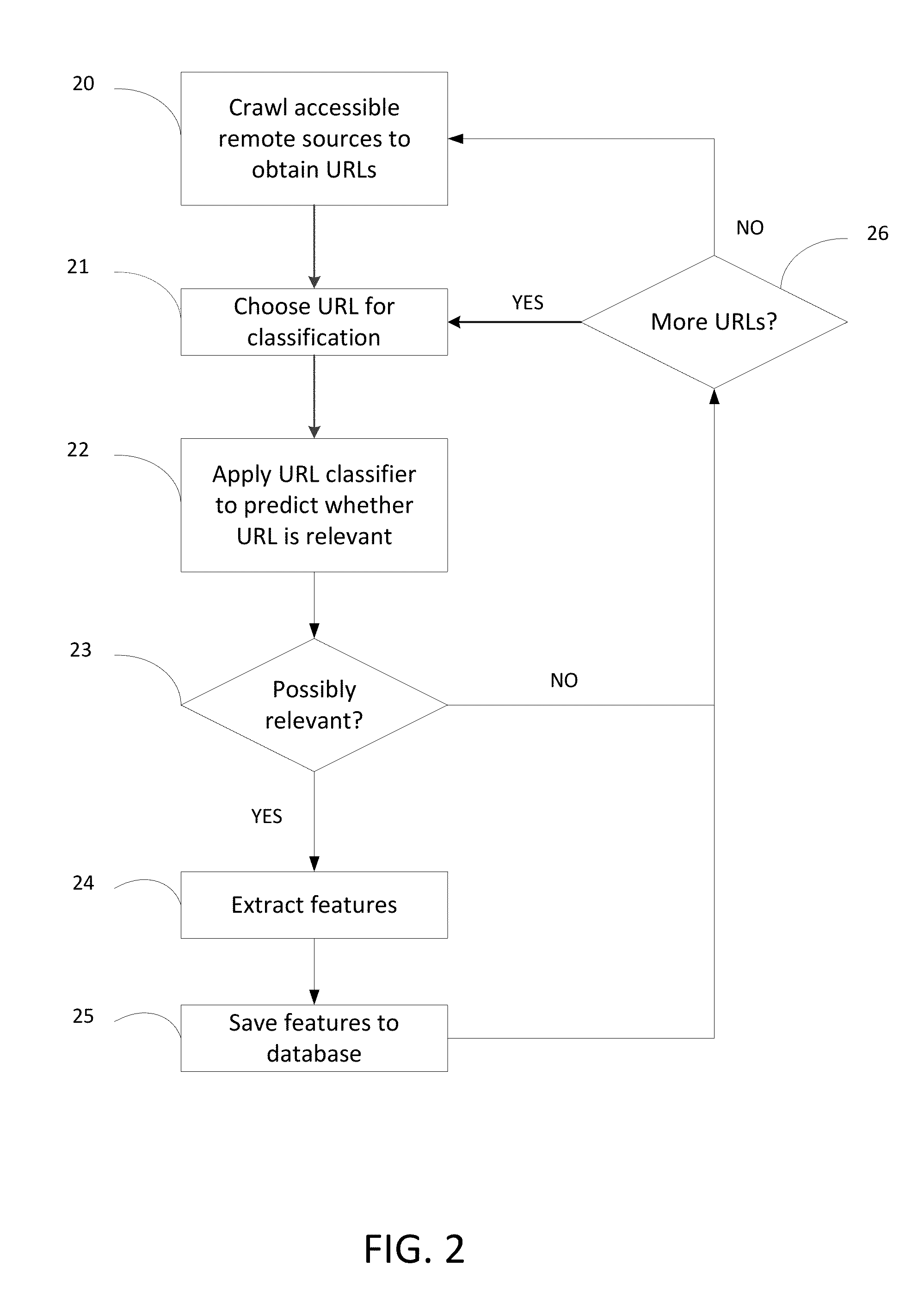Method and apparatus for forming a structured document from unstructured information
a structured information and document technology, applied in the field of data acquisition, can solve the problems of difficult to determine dish names, descriptions, or specific annotations, and achieve the effect of reducing the difficulty of determining which text entries refer to section titles, specific annotations, and reducing the difficulty of identifying the meaning of the documen
- Summary
- Abstract
- Description
- Claims
- Application Information
AI Technical Summary
Benefits of technology
Problems solved by technology
Method used
Image
Examples
Embodiment Construction
[0008]As shown in FIG. 1, illustrative embodiments improve upon prior machine learning techniques by introducing an additional classification layers that mimics human pattern recognition. Building upon classification passes that extract contextual information, illustrative embodiments look for hints that manifest in visual artifacts in the document that indicate high-level semantic categorization.
[0009]For example, after illustrative embodiments identify one component as a possible restaurant menu item name, they identify the visual characteristics of that item and look for similar visual patterns in the document. Thus, if a menu item name is displayed with an 11 point courier font in grey, other similarly displayed items are likely to belong to the same semantic category. Illustrative embodiments can correctly identify a subset of the contextual information, as the visual cues will provide the appropriate hints for the rest of the text where the confidence score might otherwise lea...
PUM
 Login to View More
Login to View More Abstract
Description
Claims
Application Information
 Login to View More
Login to View More - R&D
- Intellectual Property
- Life Sciences
- Materials
- Tech Scout
- Unparalleled Data Quality
- Higher Quality Content
- 60% Fewer Hallucinations
Browse by: Latest US Patents, China's latest patents, Technical Efficacy Thesaurus, Application Domain, Technology Topic, Popular Technical Reports.
© 2025 PatSnap. All rights reserved.Legal|Privacy policy|Modern Slavery Act Transparency Statement|Sitemap|About US| Contact US: help@patsnap.com



